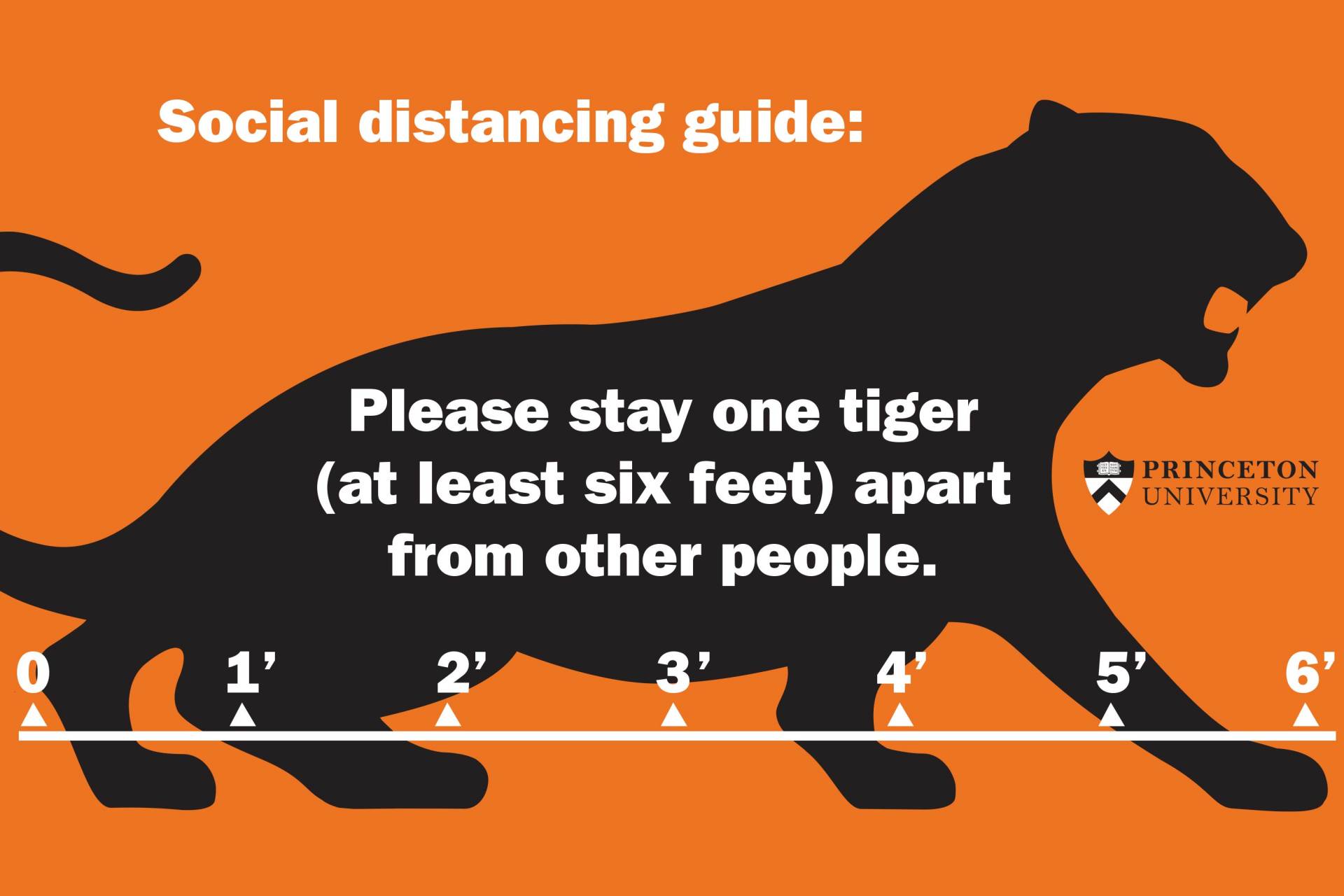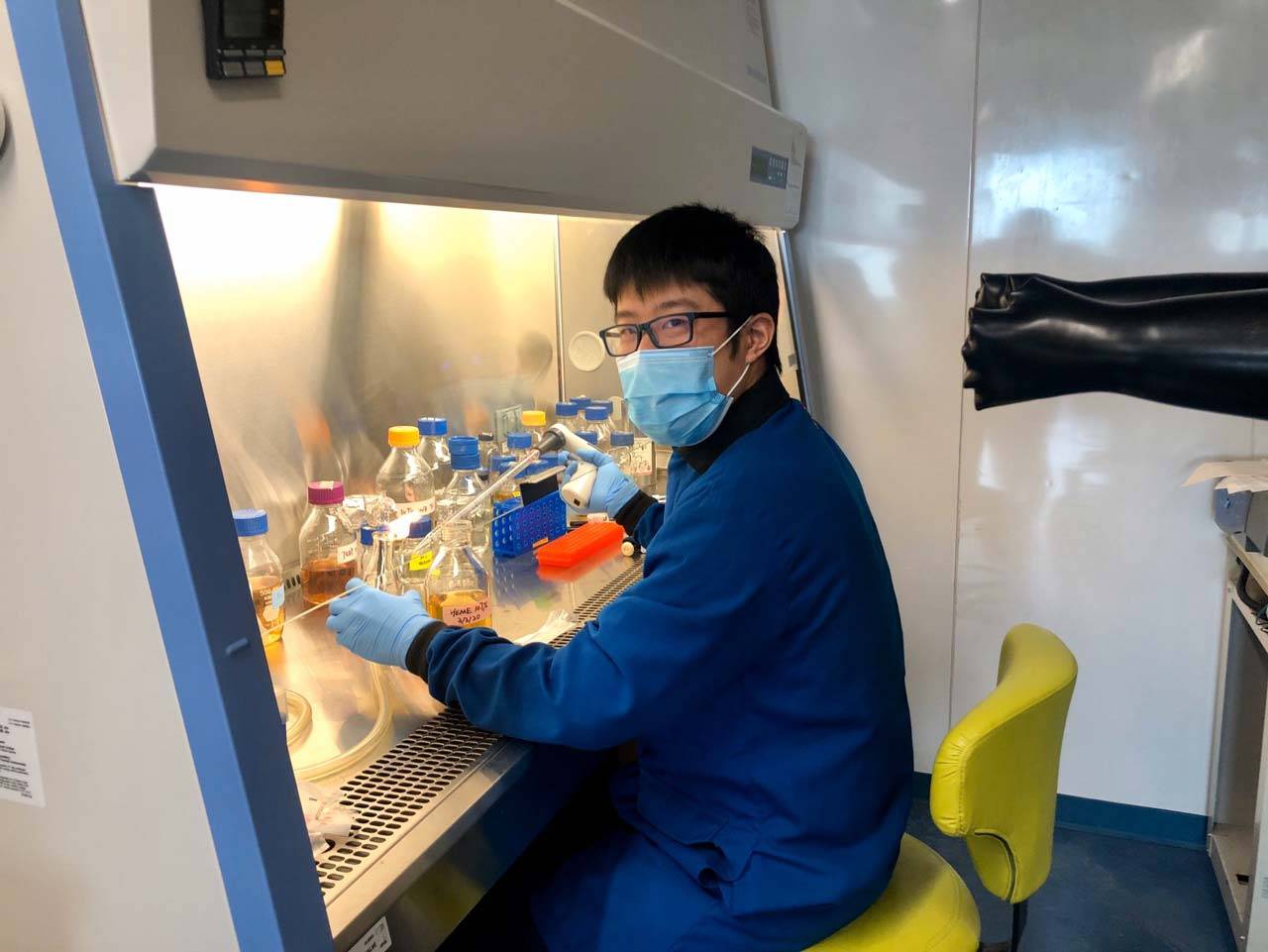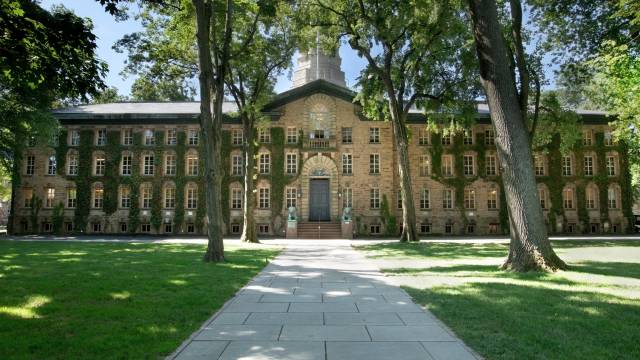As Princeton looks toward fall decision, summer sees preliminary phased resumption across the University
As Princeton University continues to plan for phased resumption of campus operations throughout the summer and for fall, several elements are already in place that lay the groundwork for creating a safe campus environment. Against a backdrop of evolving state and federal guidelines, and new public health guidance and recommendations, more than 40 University working groups have been addressing myriad questions and concerns related to the COVID-19 pandemic since spring.
Provost Debbie Prentice and Executive Vice President Treby Williams said in their June 18 message to the campus community: “Princeton will continue to set the policies we believe are right for our community within the guidelines provided by the state, and communicate any changes in those policies with you accordingly.”
Plans for the undergraduate program will be released in early July.
Throughout the spring and summer, the University community has been updated through Princeton’s COVID-19 website and weekly e-newsletters.
Below is a snapshot of public health best practices and the resumption of certain operations taking place right now on campus. Many of these policies are reflected in the Office of Environmental Health and Safety’s Princeton Playbook.
Face coverings
Face covering recommendations have evolved rapidly during the pandemic.
Princeton’s current face covering policy — which reflects current CDC and state guidelines — requires that all faculty, staff, students and visitors must wear a face covering that covers their nose and mouth whenever indoors in Princeton University buildings and includes, but is not limited to University vehicles, dining halls, Tiger Transit buses, conference rooms, office buildings, elevators and parking structures. Individuals are not required to wear a face covering outdoors if they are able to maintain physical distancing of at least six feet (two meters) from others (with the exception of member of their household) — but everyone should always carry a face covering with them for when social distancing is not possible; these instances can arise at any moment.
Wearing a face covering supplements, but does not replace, social distancing. All faculty, staff, students and visitors should continue to maintain at least six feet of separation from other people whenever possible.
For further guidance on face coverings indoors, including residents of University housing; what constitutes a face covering; how to obtain face coverings for yourself or for your department; and exceptions for individuals for whom wearing a face covering would inhibit their health, view the Environmental Health and Safety’s face covering policy online.
Social distancing and signage

In late spring, signs depicting a tiger (which in real life averages about six feet long from head to tail) were placed throughout campus to remind people to maintain social distancing. The CDC recommendation for social distancing is maintaining a distance of at least six feet from one another.
Anyone taking a walk across campus today will find themselves greeted by a new kind of Princeton tiger; in heavily trafficked areas, signs depicting a tiger (which in real life averages about six feet long from head to tail) remind people to maintain social distancing. The CDC recommendation for social distancing is maintaining a distance of at least six feet (about two arms’ lengths) from one another.
Limiting close contact with one another is among the most effective things we can do to minimize the spread of COVID-19. Social distancing involves keeping as much space as possible between ourselves and others to reduce the risk of exposure to potentially virus-containing droplets and particles that leave our noses and mouths when we speak, sneeze or cough.
Every effort should be made to avoid gathering in groups and to stay away from crowded places.
In addition to outdoor signage, the University has been placing signs throughout campus buildings with special instructions for a range of spaces including elevators, meeting rooms and bathrooms.
More information about signage as well as downloadable PDFs are available on the EHS website.
Building access, visitors and events
Princeton prides itself on being open to the public and to anyone who wishes to engage with the vibrant intellectual and cultural offerings of the University. While much of the campus had to close due to the pandemic, FitzRandolph Gate and all public entryways have remained wide open: everyone is still welcome to stroll through and enjoy the beautiful outdoor campus, while following guidelines for social distancing and face coverings.
Since March 14, all campus academic and administrative buildings have been following an extended hour weekend building schedule. This means building exterior doors are locked and are not open to the general public. Students, faculty and staff have access to buildings with card access systems using their cards from 7 a.m. to midnight.
Other University buildings without card systems are locked and have key access only. Questions about being granted key access should be directed to departments in these buildings. There is no change to residence hall access; all dorms remain locked 24/7 with card access.
As of March 21, all on-campus events and tours, including Office of Admission tours, were canceled until further notice. Summer programs were canceled as well. However, robust, engaging virtual programming has been available to the public — including virtual tours, lectures and art classes at the Princeton University Art Museum; virtual religious services, music offerings and guided meditations through the Office of Religious Life; Princeton University Concerts’ evolving list of free streaming resources and virtual concert hall on Spotify as part of its Collaborative Listening Project; and faculty-artist conversations and other special events through the Lewis Center for the Arts.
Princeton University Library
On June 8, the Princeton University Library (PUL) resumed two critical services — book pick-up service and in-house digitization of print book collections — for University faculty and students only. Library locations are not open to the public or patrons.
More information and FAQs about library services are available on the PUL website.
The research enterprise

On June 17, Princeton moved from Level 3 (Essential Research) to Level 2 (Phased Resumption of Research), which pertains to experimental, laboratory work in science and engineering. All research work that can be done remotely must continue to be done remotely. Pictured: Chen Zhang, a graduate student in the Mohammad Seyedsayamdost lab, prepares a cell culture within a sterile clean hood.
Research lies at the heart of Princeton as a leading academic institution.
In response to the COVID-19 pandemic, the University halted all non-essential on-campus research activities on March 21. The University made this difficult decision in order to protect the health and safety of the campus community, and in full awareness of the sacrifice made by faculty, graduate students, postdoctoral researchers and members of the research staff in delaying experiments or terminating those in progress.
In a June 17 email to the University research community, Dean for Research Pablo Debenedetti announced that the University was able to officially move from Level 3 (Essential Research) to Level 2 (Phased Resumption of Research).
What does phased resumption mean? Phased resumption pertains to experimental, laboratory work in science and engineering. All research work that can be done remotely must continue to be done remotely.
From the start of the pandemic, the goal has been to enable the smooth restart of Princeton’s extraordinary on-campus research enterprise, with the health and safety of the campus community as the paramount concern.
Carefully orchestrated guidelines — which reflect CDC and state guidelines — delineate the phased resumption process.
The full Phased Resumption of Research plan, processes and resources are located on the Dean for Research website. The plan will be continuously updated as new information and guidance on COVID-19 and its treatment and prevention become available.
In town
The town of Princeton also implemented changes this summer, pursuant to state guidance. Face coverings are recommended at all times and required for pick-up orders inside dining and food establishments and in grocery stores. Wearing a face covering supplements, but does not replace, social distancing, which is strongly encouraged everywhere in town — just as on campus.
On June 15, Governor Phil Murphy announced that New Jersey entered Stage Two of his restart and recovery plan, “The Road Back: Restoring Economic Health Through Public Health.” Stage Two includes outdoor dining for restaurants and indoor, non-essential retail as of June 15. Witherspoon Street in Princeton was reconfigured with a one-way lane of car traffic to accommodate outdoor dining for restaurants on both sides of the street. Outdoor seating is limited to no more than eight people at a table and parties must be spaced at least six feet apart.
Indoor dining is not permitted in New Jersey and has been put on hold indefinitely due to public health concerns. On June 22, barber shops, salons and personal care businesses received approval to reopen, provided they adopt the required social distancing and safety protocols.

